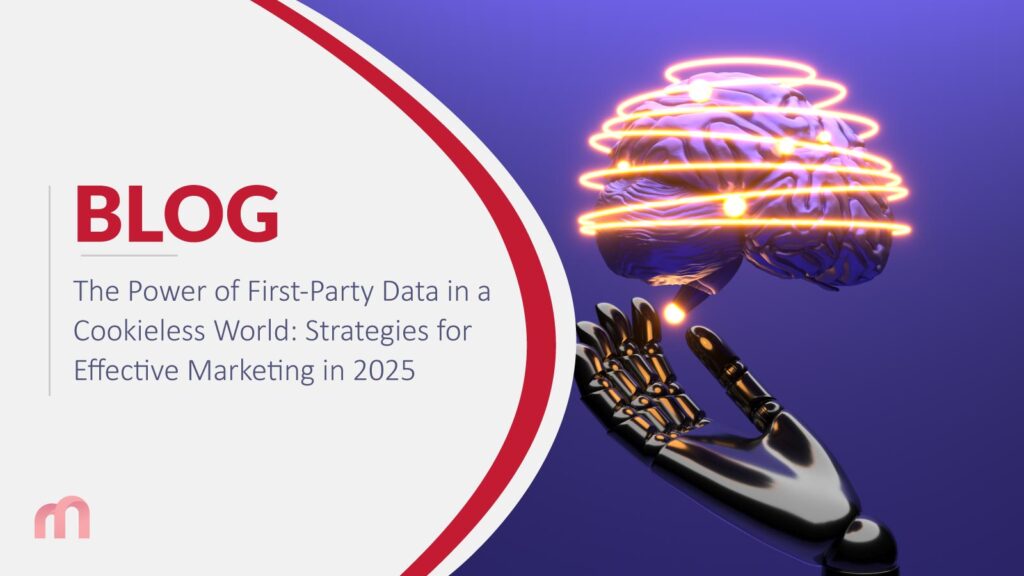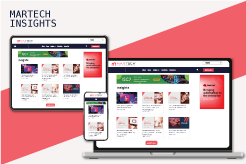Digital marketing is undergoing a massive change in 2025. As third-party cookies are declining, companies are shifting their focus towards first-party data as a privacy-compliant and safe solution. This change not only addresses the issue of privacy, but also presents new opportunities for customized and effective marketing strategies.
First-party data, which you gather directly from your audience, provides the most intimate information on customer behavior and preferences. Tapping into this data can optimize customer experience, enhance targeting accuracy, and return more ROI. In this piece, we’re going to talk about the role of it in a cookieless future and provide pragmatic tips on how to unlock its full potential.
Understanding First-Party Data
First-party data describes the data collected immediately from your individuals through their interactions with your site, app, or other assets that are owned. All this will incorporate information on:
- Website analytics
- Email subscription
- Purchase record
- Customer polls
- CRM programs
- User trends and behavior on owned media
While third-party data is collected without users’ consent, first-party data is collected through users’ agreement, thus it is more precise and privacy-compliant. It provides definitive and concise information regarding individuals who have interacted with your company before, according to Forbes.
This is favored by marketers, not only for targeting but also for deeper customer insight. It gives context to customer journeys and enables dynamic customer profiles that develop with every interaction. This supports detailed personalization—historic “first name” email personalization to timely, context-driven messages based on actual behavior and need.
The Decline of Third-Party Cookies
Third-party cookies have been the pillar of web advertising for decades, allowing companies to monitor user activity across websites. But heightened privacy issues and regulations such as GDPR and CCPA have necessitated their phase-out over time. Large browsers such as Safari and Firefox already block third-party cookies by default, and Google Chrome will soon follow suit, as quoted by vlerick.com.
This change isn’t technical—it’s cultural. Consumers desire transparency into how their data is being collected and utilized. Brands that don’t change will sacrifice ad performance as well as customer trust. Through a first-party data strategy, brands not only guarantee consistency of targeting and measurement but also further establish the brand as a privacy-first brand.
Benefits of First-Party Data
Deeper Personalization. First-party data enables more accurate marketing. With knowledge of customers’ behavior and preferences, companies can customize content, offers, and experiences to meet individual requirements. Personalization can lead to increased engagement and loyalty. Netflix and Spotify, for example, leverage first-party data to suggest content that users will like, enabling hours of additional engagement per week.
Enhanced Data Accuracy. Information gathered directly from consumers is more accurate and useful. The precision improves decision-making and marketing more effectively. It reduces dependence on assumptions and aggregated or outdated models of data.
Compliance with Privacy Legislation. Collecting first-party data is privacy regulation-compliant due to open data collection practices and user consent. Such compliance builds trust with your audience and reduces legal risk. Consent marketing also opens the door to trust-based personalization, where customers know how their data is being used and feel good about it.
Cost Efficiency. Third-party dependency for data can be reduced through first-party data. It also prevents wastage of ad spend by converting superior quality leads. Brands can lower acquisition costs as well as increase retention rates—a dual marketing advantage for ROI marketers.
Tactics for Leverage First-Party Data
- Maximize Data Capture Points: Use more than one touchpoint for collecting first-party data, like:
- Subscription forms
- Loyalty programs
- Interactive content (quizzes, calculators, surveys)
- Account sign-ups
- Chatbot dialogs
- Feedback widgets on top product or service websites
Make those touchpoints easy and make information sharing valuable. Provide concrete benefits—unique content, cost savings, early bird registration, or enhanced experience—to make opt-ins hard to resist.
- Leverage Customer Data Platforms (CDPs): CDPs such as Salesforce, Segment, or Bloomreach assist in organizing and analyzing first-party data. They make segmentation, targeting, and personalization scalable, improving marketing effectiveness (andersoncollaborative.com).
Merging data from more than one source—web, app, in-store—into one customer view is the core of omnichannel marketing. CDPs allow this profile to be triggered in real-time campaigns.
- Adopt AI and Machine Learning: AI-based solutions can work on massive volumes of first-party data to detect patterns and make predictions about customer behavior. Solutions can dynamically re-segment users on real-time actions, optimize when and what to send, and even predict customer churn or product need.
Predictive analytics helps marketers identify cross-sell and upsell opportunities to optimize customer lifetime value.
- Emphasis on Consent and Transparency: Describe data collection behaviors and obtain clear consent. Transparency promotes trust and inspires users to provide their information voluntarily. Users can be provided with control over their data through the use of preference centers and privacy dashboards, thereby increasing satisfaction and retention.
- Link Data Across Channels: Make first-party data consistent across all marketing channels to deliver a single customer experience. It produces consistent messaging and more impactful cross-channel campaigns, no matter if the customer is on your app, website, social, or email.
Challenges in Using First-Party Data and Overcoming Them
While first-party data is strong, it’s not without challenges:
Data Silos: Data that is gathered across various departments (customer service, marketing, sales) typically resides in separate systems. Combining this data calls for organizational and technology alignment. CDPs and integration platforms such as Zapier or MuleSoft can bridge these gaps.
Quality and Completeness: First-party data doesn’t come any cleaner than cleanliness and completeness of data. Bad or stale data can be accomplished with bad campaigns. Validate processes, practice data hygiene regularly, and start customer update processes to keep your data in top shape.
Privacy and Compliance: Even where consent is present, legislation demands secure storage, limited use, and simple opt-out. Work very closely with your compliance and legal teams to develop governance policy. Incorporate privacy into your brand.
Real-World Applications
First-party data is being used with wonderful success by businesses in all sectors:
- E-commerce: Managed product suggestions, cart-abandonment recovery emails, loyalty program promotions.
- Finance: Convenient credit promotions as a function of spending patterns, tailored investment recommendations.
- Healthcare: Active reminders for appointments, lifestyle recommendations based on medical interaction history.
- Education: Interactive learning programs based on user engagement with learning modules.
- Media: News headlines and newsletters on a per-reader interest basis.
These applications demonstrate the flexibility and power of first-party data to drive customer interest and sales.
Frequently Asked Questions
1. How does first-party data differ from third-party data?
From your own audience, through interaction on your channels, is where you build first-party data. Third-party data is built by other bodies and sold to organisations.
2. Where do I begin to gather first-party data?
Include data collection mechanisms such as sign-up forms, questionnaires, and reward schemes. Make sure that you have mechanisms required for retaining the information for storing and reviewing effectively.
3. Is first-party data privacy-compliant?
Yes, provided you collect it in an open way and with user opt-in, first-party data collection is compliant with privacy laws such as GDPR and CCPA.
4. Will small businesses gain any benefits from first-party data?
Yes, certainly. First-party data gives valuable insights to businesses of all sizes, allowing for personalized marketing and enhanced customer relationships.
Conclusion
As we work our way through the cookieless world, first-party data is gold for a marketer. Its accuracy, governability, and ability to personalize its use make it an absolute imperative in 2025 and beyond. With the right technology and practices, companies can rethink the way they understand, engage, and serve customers.
Pre-holiday planning will put you ahead – establishing trust, maximizing performance, and securing marketing that is future-proof. The day is now to become the master of your data destiny.
Looking to future-proof your marketing plan?
Get a head start, unleashing the strength.
Subscribe to our newsletter for top-notch insights, tested tips and tricks, and practical experiences about how to succeed in a world without cookies, or talk to our data marketing specialists and understand how your business can make data work in meaningful growth.
Let’s Boost Your Strategy – Book Your Free Consultation Now!
For media inquiries, you can write to our MarTech Newsroom at sudipto@intentamplify.com



